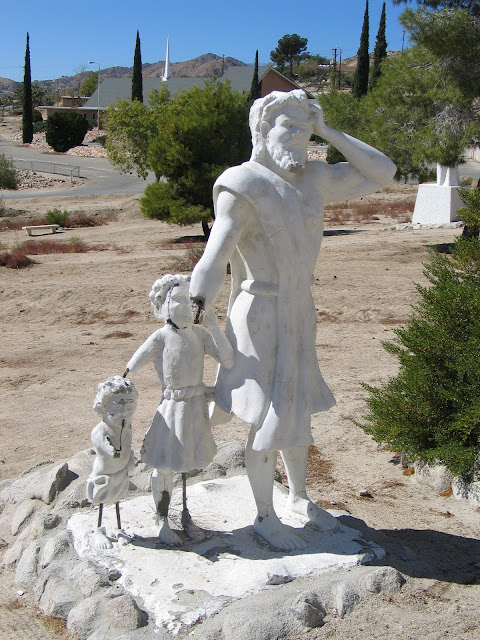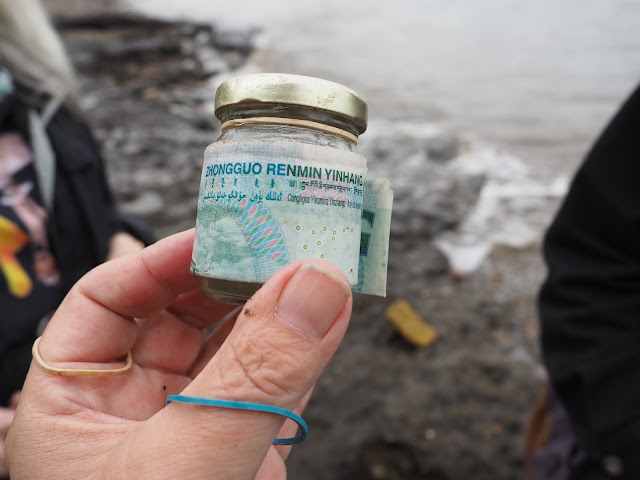Tom Waits is always with us, and he’s especially with me whenever I walk in a garden and I remember his song ‘Way Down in The Hole’ with the lines that run,
‘When you walk through the garden
You gotta watch your back’
 |
| As close as I can get to a picture of Tom Waits in a garden. |
I assume this refers to the Garden of Gethsemane but I think perhaps it applies to walking in many, perhaps most, gardens.
Of course I knew that the Garden of Gethsemane was where Jesus prayed the night he was betrayed by Judas and where he experienced his ‘agony.’ But lately I discovered there are at least four potential locations for the Garden of Gethsemane. All of them are near the Mount of Olives, but the Catholics reckon it’s the garden at the Church of All Nations built over the ‘Rock of the Agony,’ or maybe it’s by the Tomb of the Virgin Mary to the north. The Orthodox Greeks reckon it’s to the east. The Orthodox Russians place it in the orchard adjacent to the Church of Mary Magdalene. I think I’ve got that right but I stand to be corrected by true believers.
Now, I don’t imagine I shall ever walk in the Garden of Gethsemane (though I gather there are plenty of bus tours), and for that matter I don’t think I’ll be following Waits’ advice that ‘If you walk with Jesus, he’s gonna save your soul.’ However, I have been walking among sculptural representations of the Lord, in the Desert Christ Park, on Sunnyslope Drive in Yucca Valley, and I have least peered into an artistic representation of the Garden of Gethsemane. I shall explain.
Now, one of the things I sometimes think about while walking in gardens, is what’s the difference between a park and a garden: and OK I agree its not one of humanity’s most pressing questions. However the Desert Christ Park had me thinking again.
The name would seem to define it as a park, but their mission statement reads, ‘To provide a desert sculpture garden of hope, prayer and beauty; by sharing the Peace of Christ through art.’ So does that mean the place is simultaneously a park and a garden. Maybe.
The Desert Christ Park was established 1951 when a single concrete statue of Jesus was placed there. The statue was by Antone Martin, sometimes described as a sculptor-poet, who looked like this, which is pretty much the way you'd want him to look:
He’d wanted to have the statue installed at the Grand Canyon but the authorities wouldn’t go for it. However, the Reverend Eddie Garver who was pastor at the Yucca Valley Community Church, and had acquired five acres from the government to form what he hoped would be a Christian theme park (or I suppose garden), was happy to have the statue on his patch.
Over the next decade Anton Martin made many more statues, most of them created in situ. Jesus is consistently portrayed as a good looking feller, long hair swept back, a beard, mostly with very serious though a smile seems to occasionally to play about his lips. He does, of course, look very white.
Many of the statues are part of tableaux; Blessing the Children, The Last Supper, Sermon on the Mount, and of course the Garden of Gethsemane - Jesus on his knees praying, while the disciples Peter, James and John are asleep. This kind of thing:
Though in fact you can’t get very close because of this stern bit of signage.
I’ve been going to the Desert Christ Park once in a while for over two decades now, and there was definitely a period when the place went into decline. The concrete is formed around armatures of rebar. Some of the ‘flesh’ on the fingers had fallen off in places off over the leaving Jesus with metal spikes for hands. To be fair this did have a certain grim appeal.
But when I was there a couple of months ago, a lot of repair work had been done, though there was still the occasional chipped or missing nose, which seems forgivable.
Contemporary and historic photographs show the Garden of Gethsemane to be dense with gnarled olive trees – some of them reckoned to be 900 years old. And the Desert Christ Park has some glorious olives trees.
Some of them are also bedecked with wonderful, architectural birdhouses, an idea I may steal for my own unreligious garden.
Now in some ways it’s hard to take the Desert Christ Park entirely seriously. There is something faintly absurd about the enterprise. And Antone Martin is no Michelangelo. But then who is?
On the other hand, having walked around and among Anton Martin’s statues, I find it impossible to find the concept entirely ludicrous. The place is rich with belief, sincerity, spiritual commitment. You emerge, or certainly you can emerge feeling good, feeling charmed and uplifted. I didn’t even feel that I had to watch my back.























































